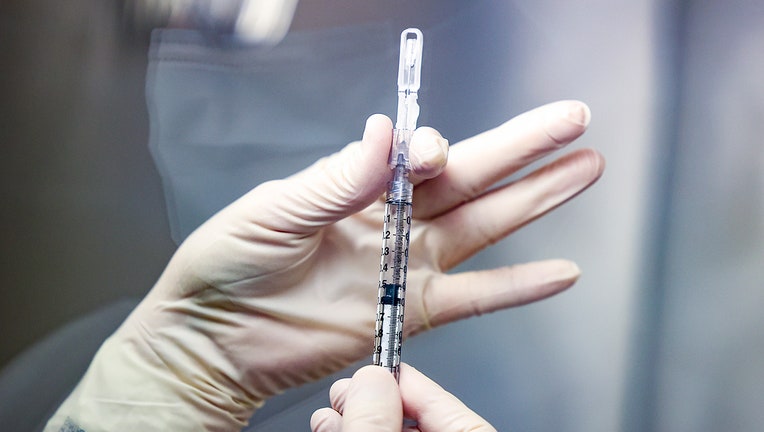Which arm receives COVID-19 booster may make a difference, study finds

Pharmacy technician prepares a dose of the Johnson & Johnson COVID-19 vaccine (Credit: Michael Ciaglo/Getty Images)
Prior to receiving the COVID-19 vaccine, many people tend to ask: Will it hurt? Will there be symptoms? However, the question of whether repeat vaccinations are best given in the same arm is probably not a question many people have asked – until now.
A new study finds that a person’s immune system may be stronger if their COVID-19 booster goes in the same arm as their previous shot.
"The question seems so banal, so trivial that nobody before has thought to ask it," Professor Martina Sester, a biologist and co-author of this study, said in a press release.
Researchers at Sarrland University in Germany analyzed data from more than 300 people who received the mRNA vaccine, along with a booster dose.

COVID emergency is over, WHO says
The World Health Organization declared Friday that the COVID-19 emergency is officially over, but what does that mean? Dr. William Schaffner with Vanderbilt University joined LiveNOW from FOX's Josh Breslow to explain.
The team found that the number of "killer T cells" – cells that attack and destroy the other cells they target – was significantly higher in those individuals who had been injected in the same arm.
The killer T cells were detected in 67% of cases using the same arm, in contrast to 43% of the cases in people who used different arms.
Sester told FOX Television Stations that the study, published Aug. 11 in the journal eBioMedicine, suggests that the one-arm vaccination is a factor that influences the generated immunity after vaccination in a dual dose regimen and may be more likely to provide better or longer-lasting protection should the vaccinated person become infected with the COVID-19 virus.
"Often vaccines are given in the same arm since people tend to use their non-dominant arm. We can support this general preference from an immunological point of view," Sester explained.

Dealing with COVID-19: How to live with the virus
As new variant continue to spread across the U.S., we talk with doctors about how to live with the virus now and in the future.
Sester noted, "The number of antibodies, however, was not greater." While the immune cells are important for quickly destroying the virus, antibodies are also important for preventing the virus from causing further harm.
However, the antibodies found in people with the booster in the same arm were better at binding to the viral spike proteins, the study showed According to the National Institutes of Health, spike proteins are responsible for the coronavirus entering cells.
Sester said further study will be needed to evaluate if their results also apply to other vaccines. She also explained that the results are a snapshot of the immune response two weeks after the second dose without analysis of further points in time.
" Addressing the dynamics over time would also be interesting for future studies. In any case, documentation of the vaccine side in larger studies may also inform [us] as to how our study findings translate into differences in efficacy regarding protection," she added.
The next round of COVID-19 vaccines will target one of the latest versions of the coronavirus, the Food and Drug Administration said in June.
RELATED: New COVID-19 variant ‘Eris’ spreads across US, other countries
FDA’s decision came one day after an agency panel of outside advisers supported the recipe change. The agency told vaccine makers to provide protection against just one omicron strain, known as XBB.1.5.
The three U.S. companies that make COVID-19 shots said this week they had geared up to make the formula change, in anticipation of making many millions of doses available for the fall.
COVID-19 hospital admissions have inched upward in the United States since early July in a small-scale echo of the three previous summers.
RELATED: COVID-19 hospitalizations in the US resurge, marked by different patterns
But it's a far cry from past peaks, like the 44,000 weekly hospital admissions in early January, the nearly 45,000 in late July 2022, or the 150,000 admissions during the omicron surge of January 2022.
This story was reported from Los Angeles. The Associated Press contributed.

